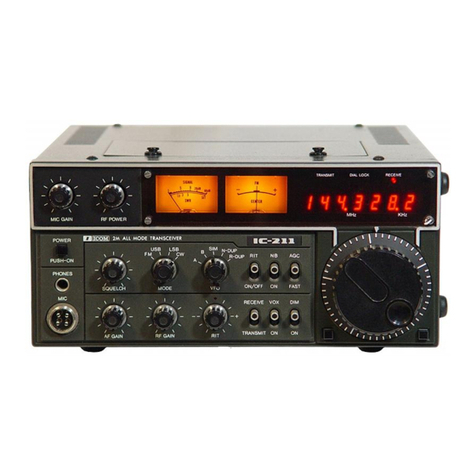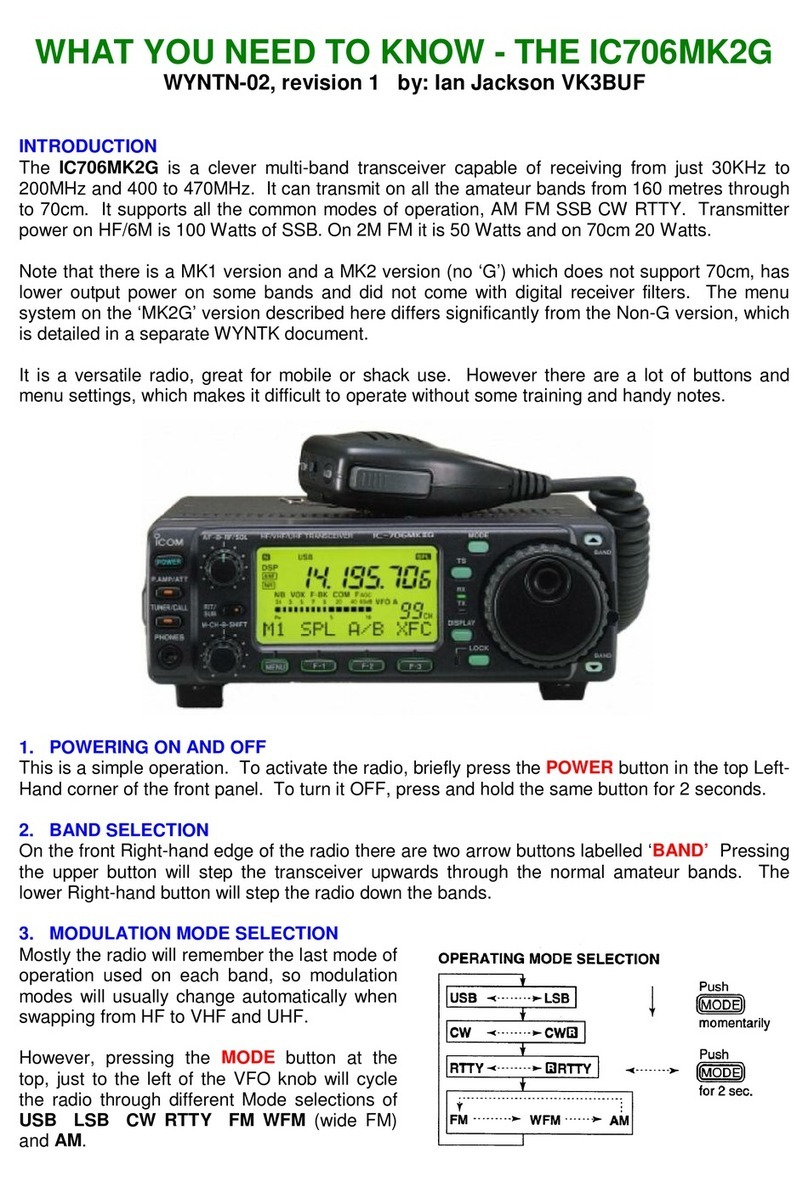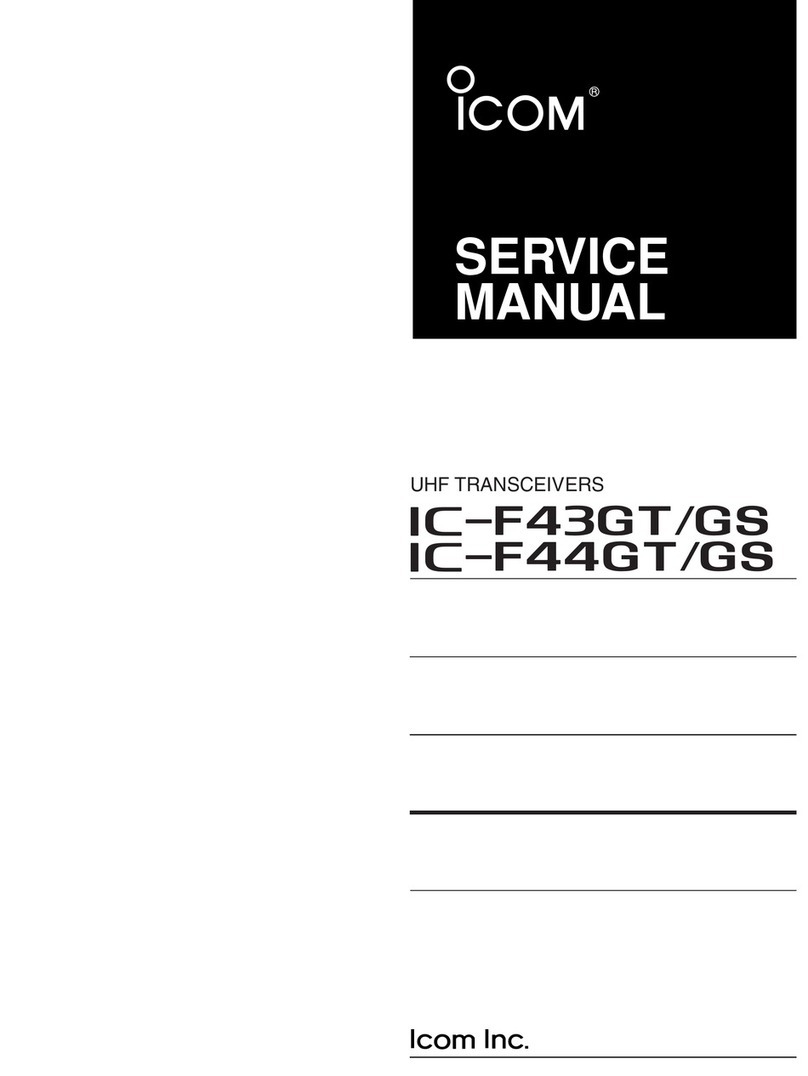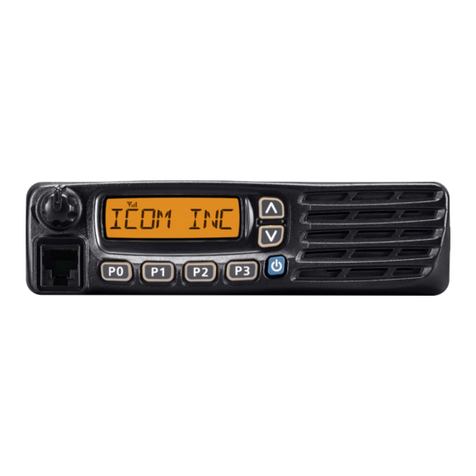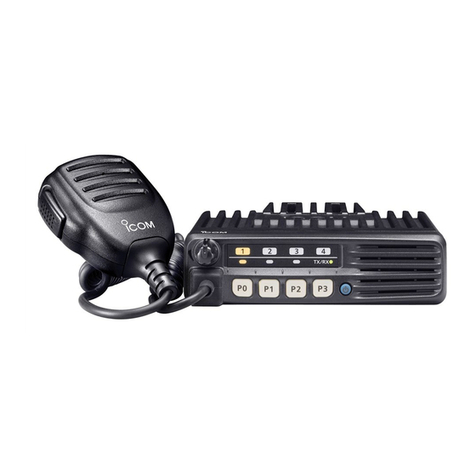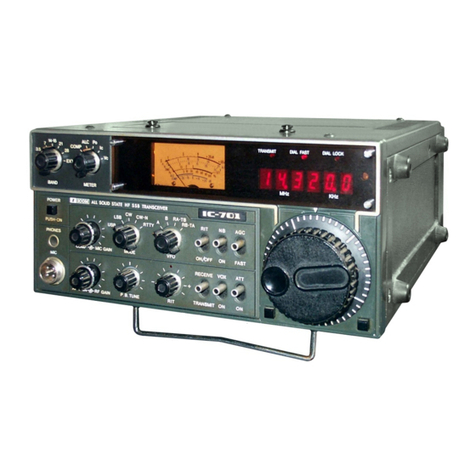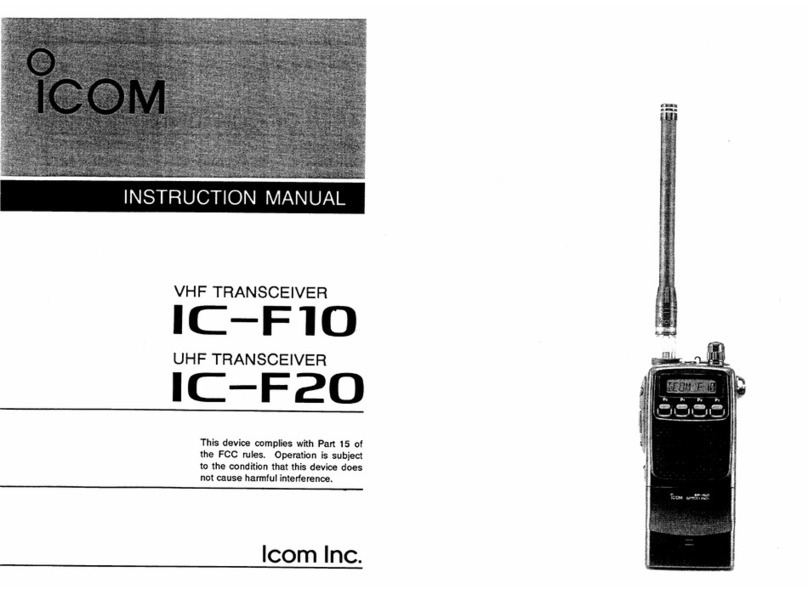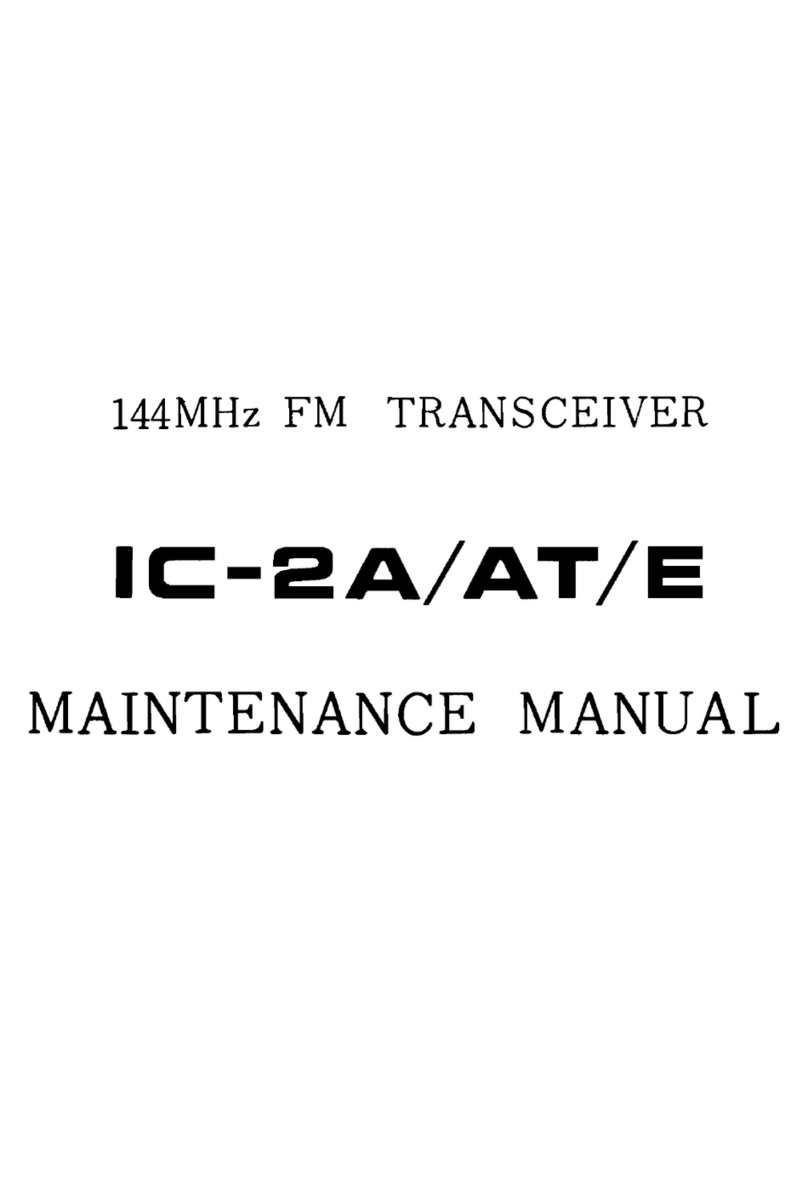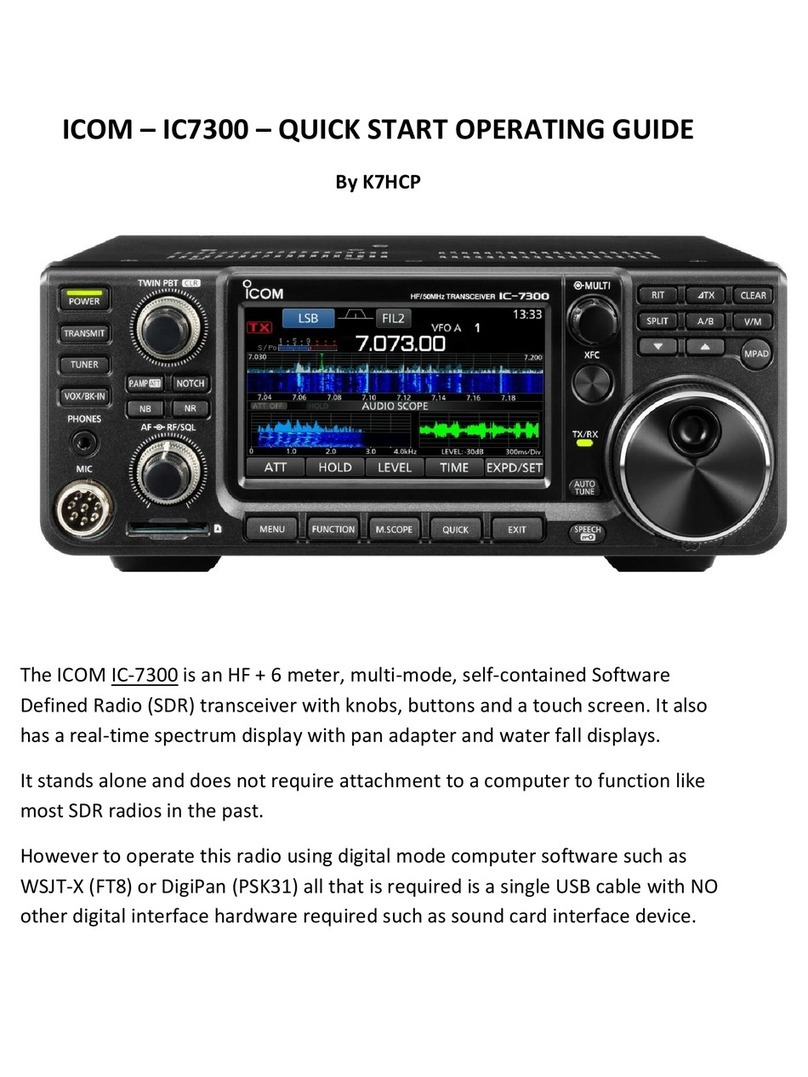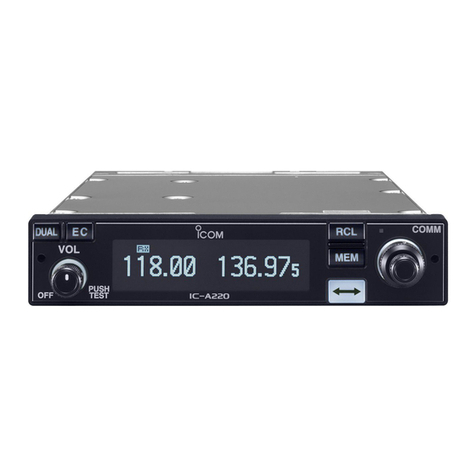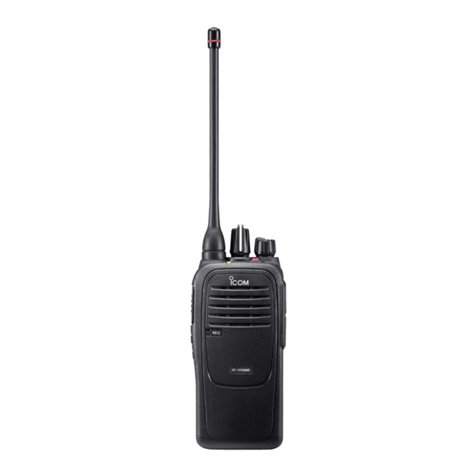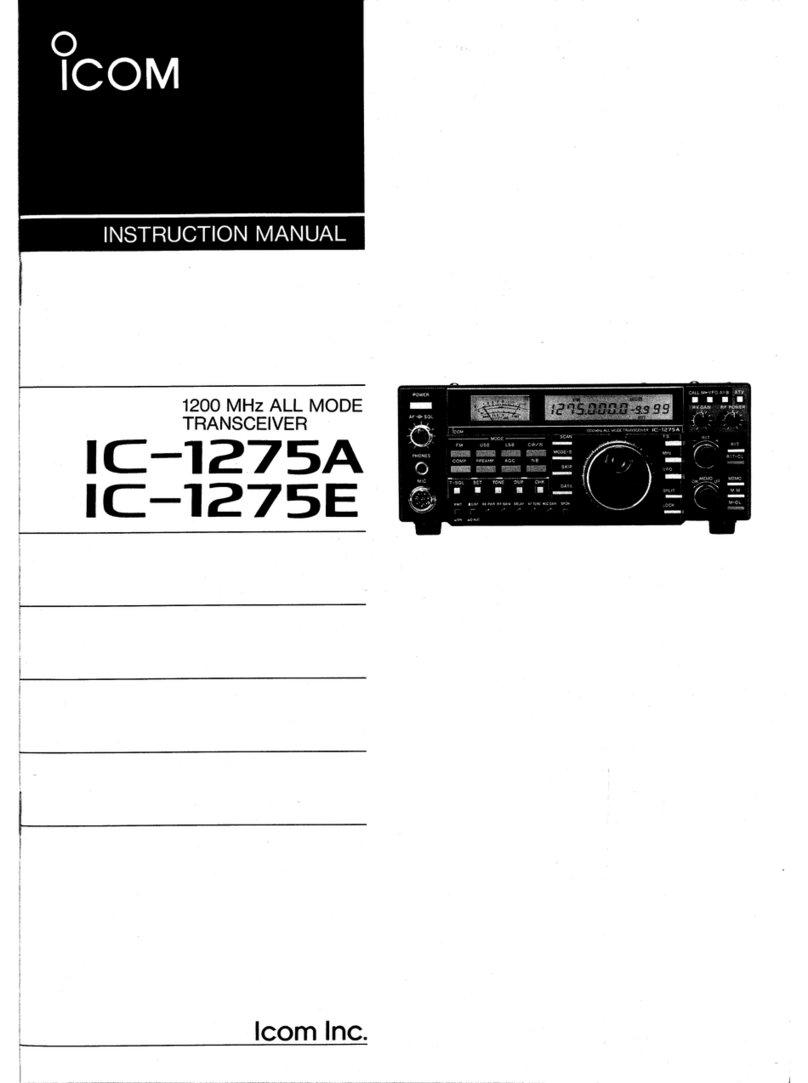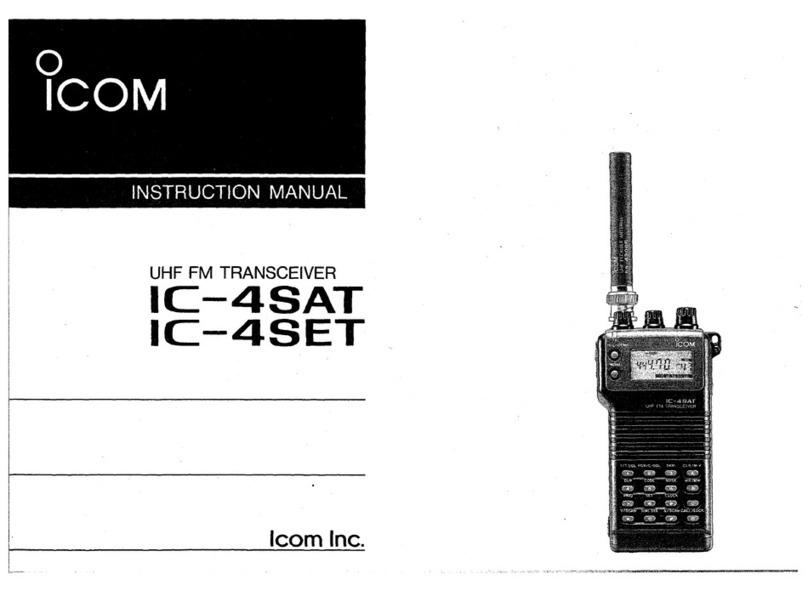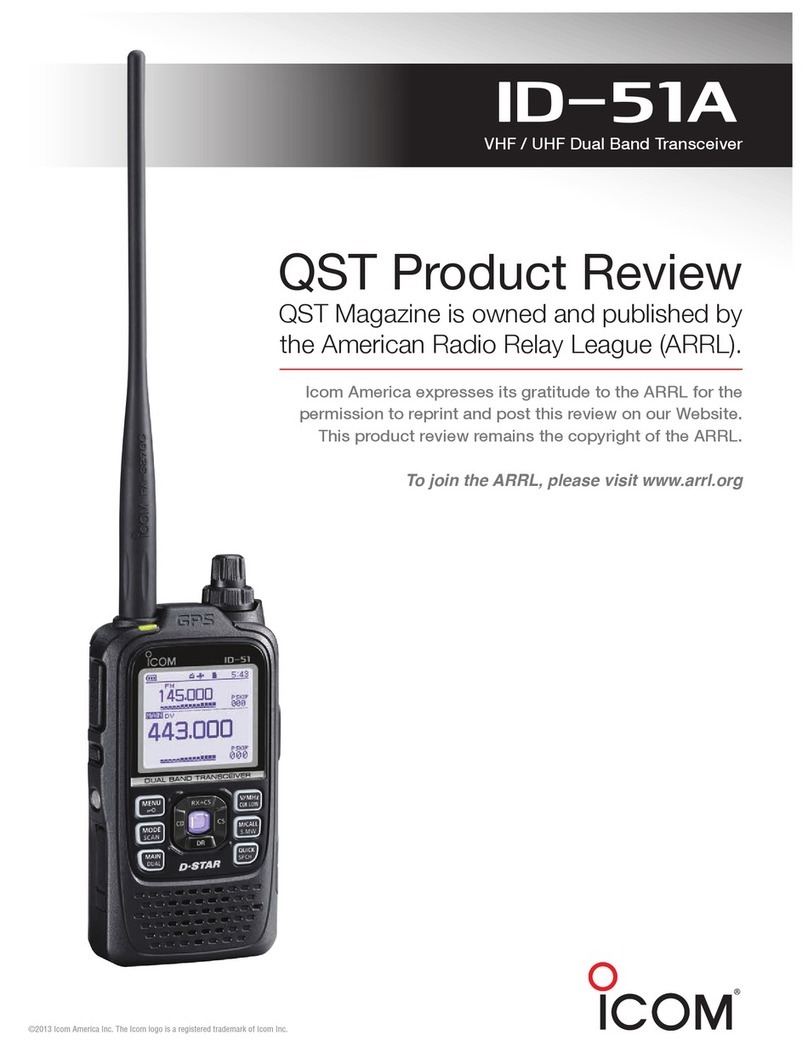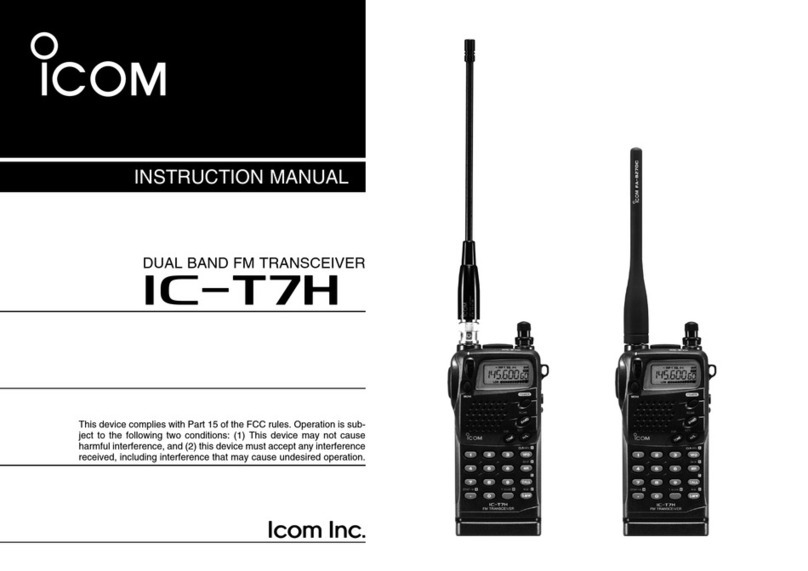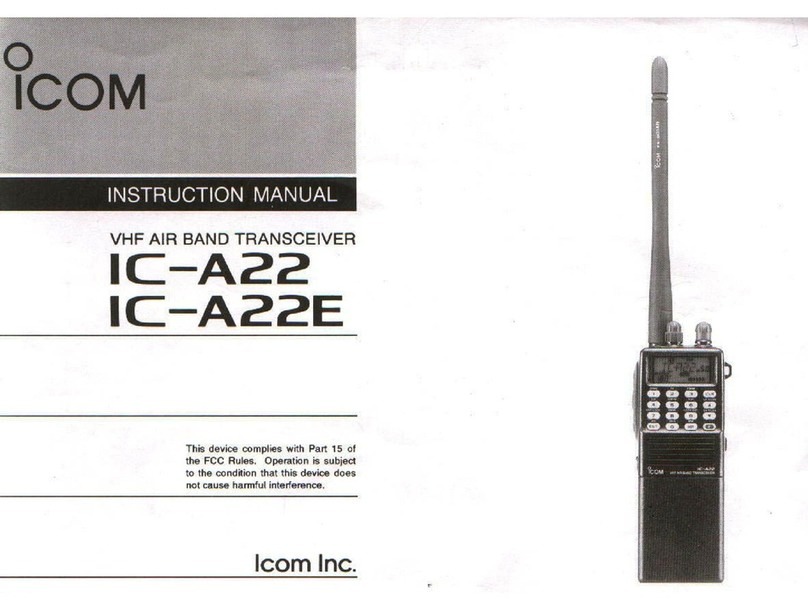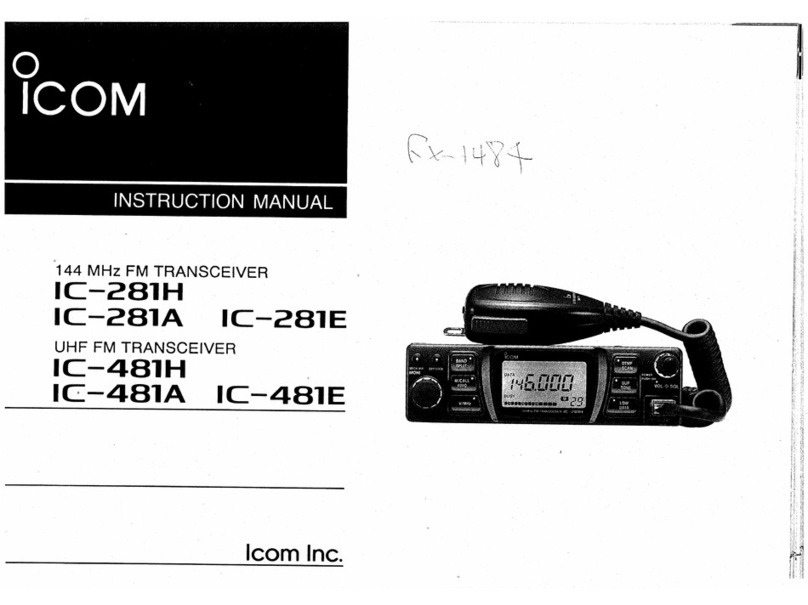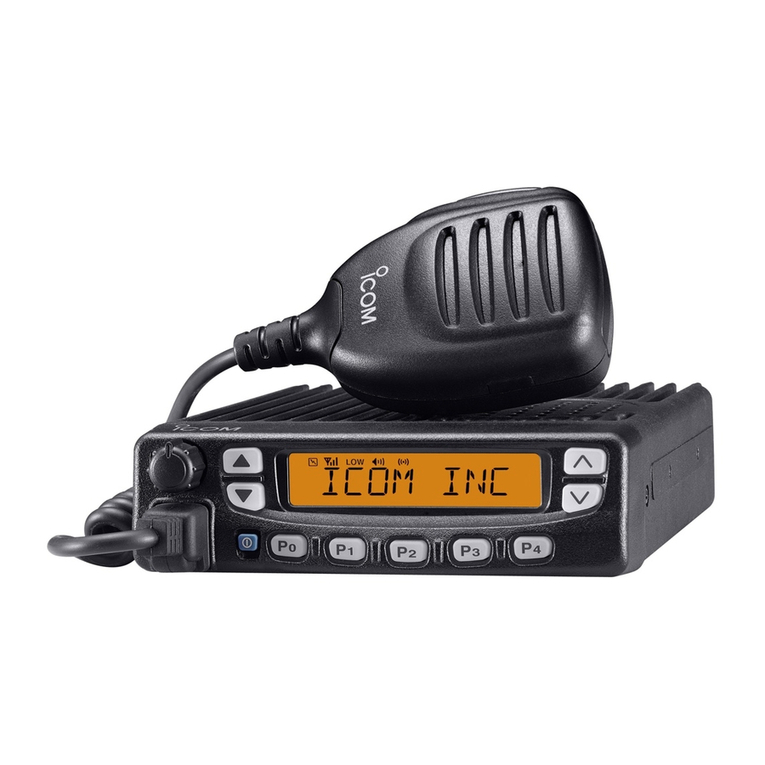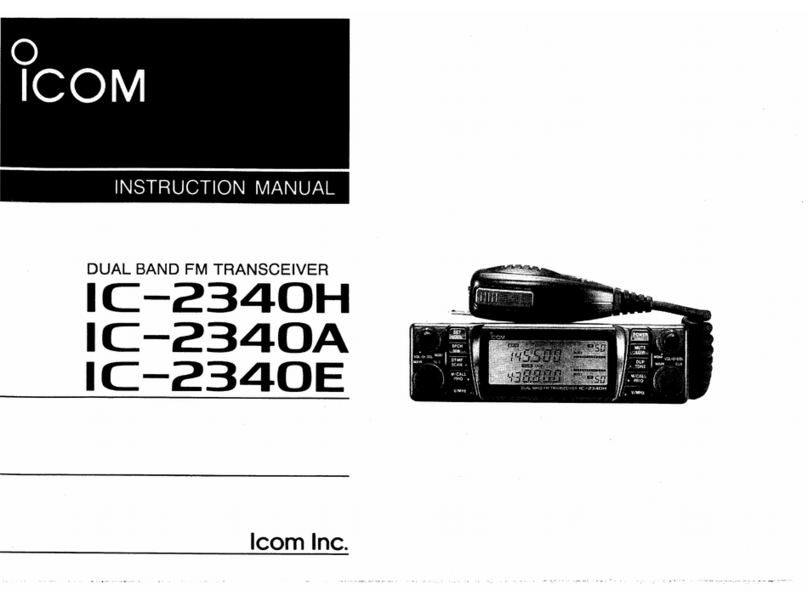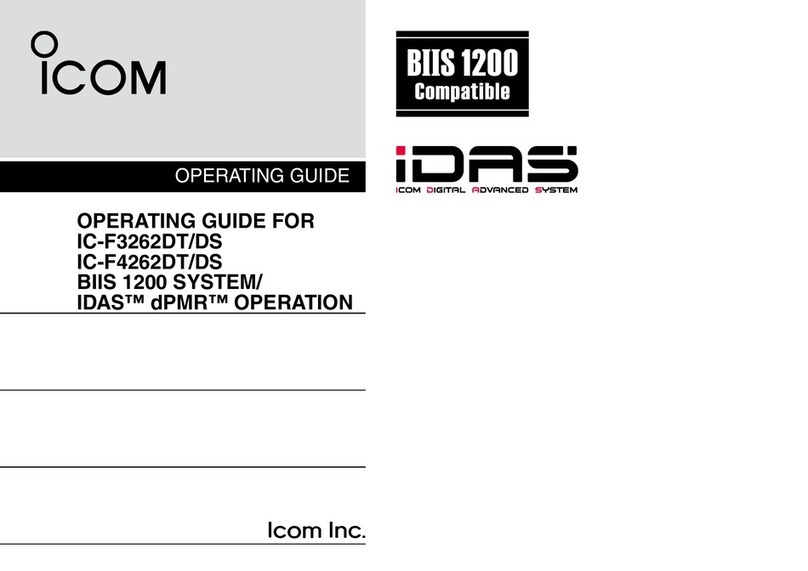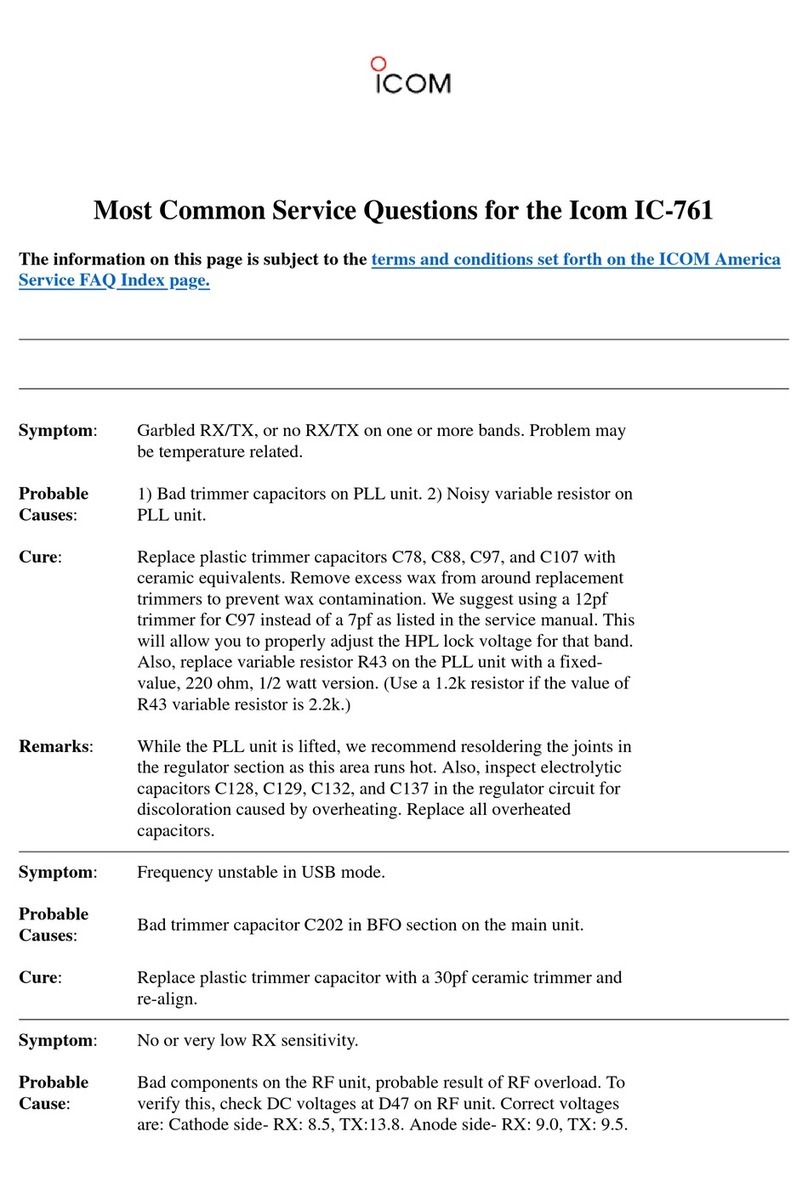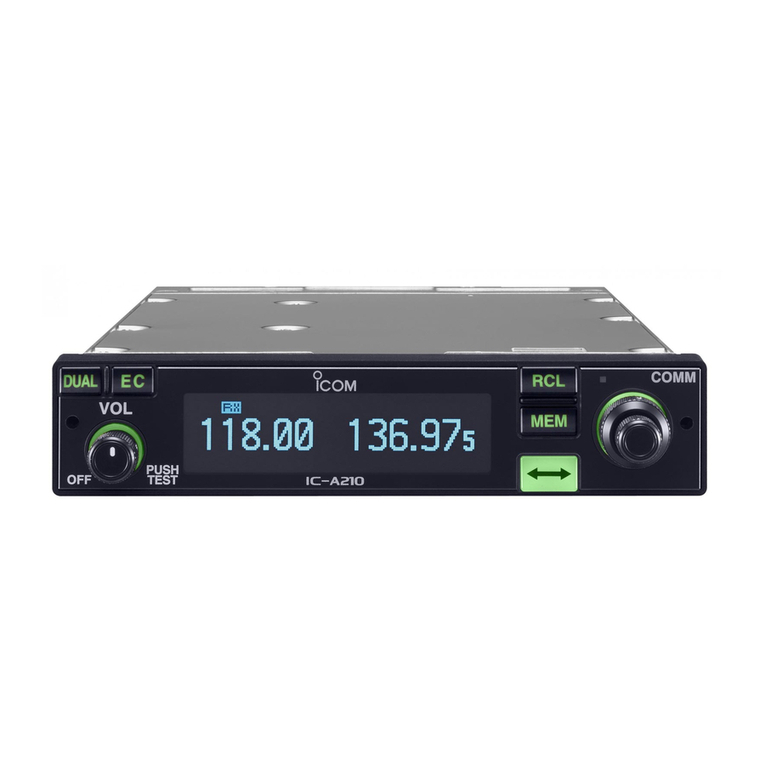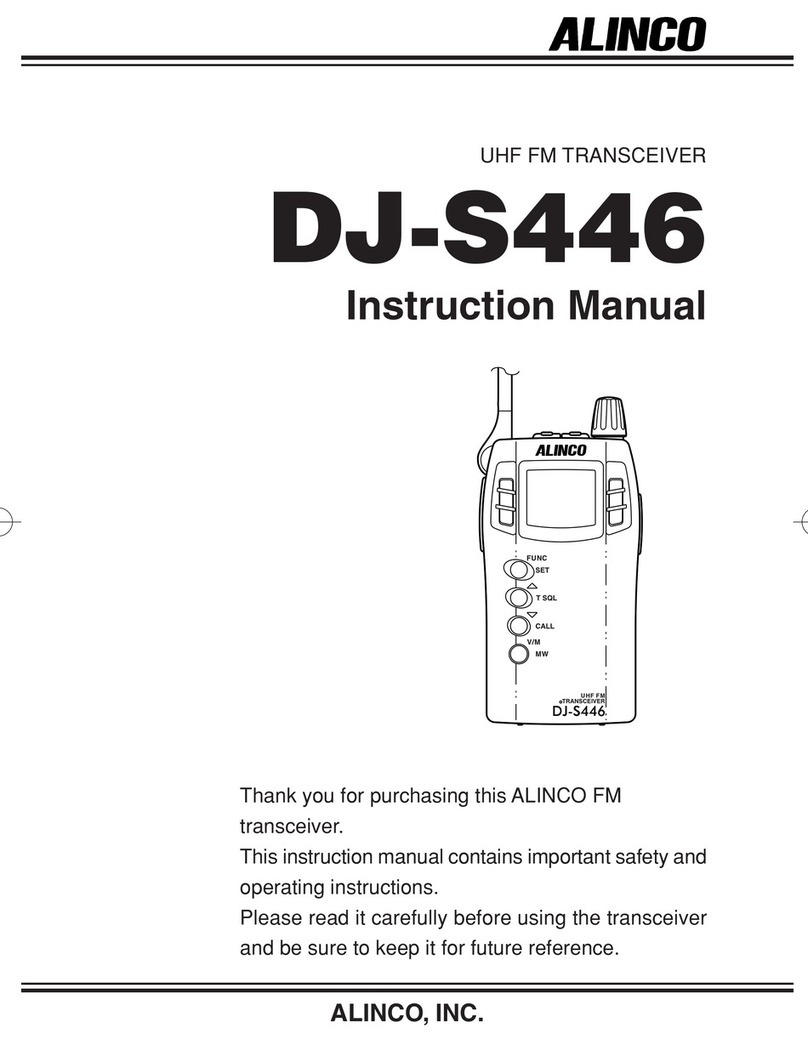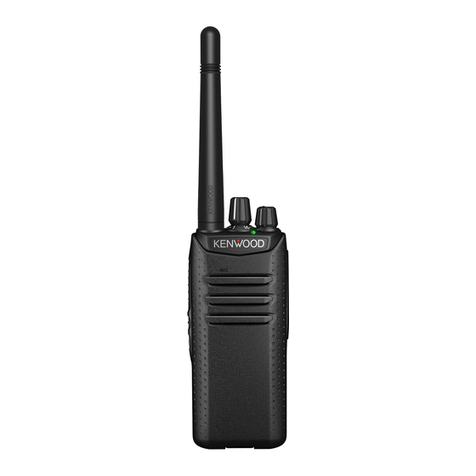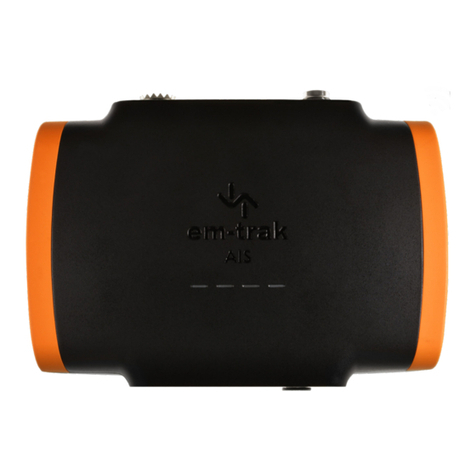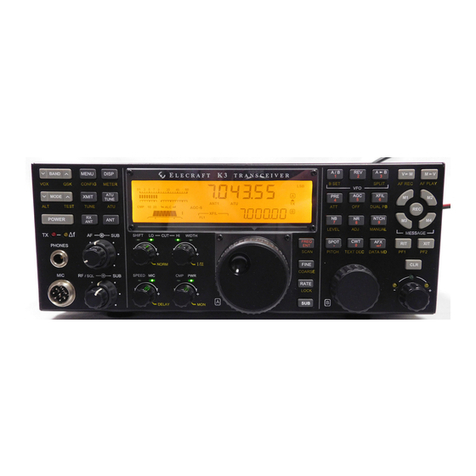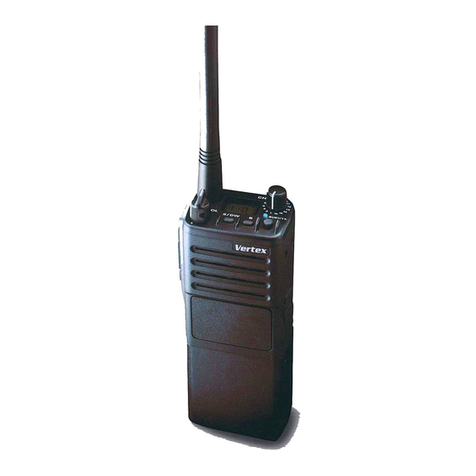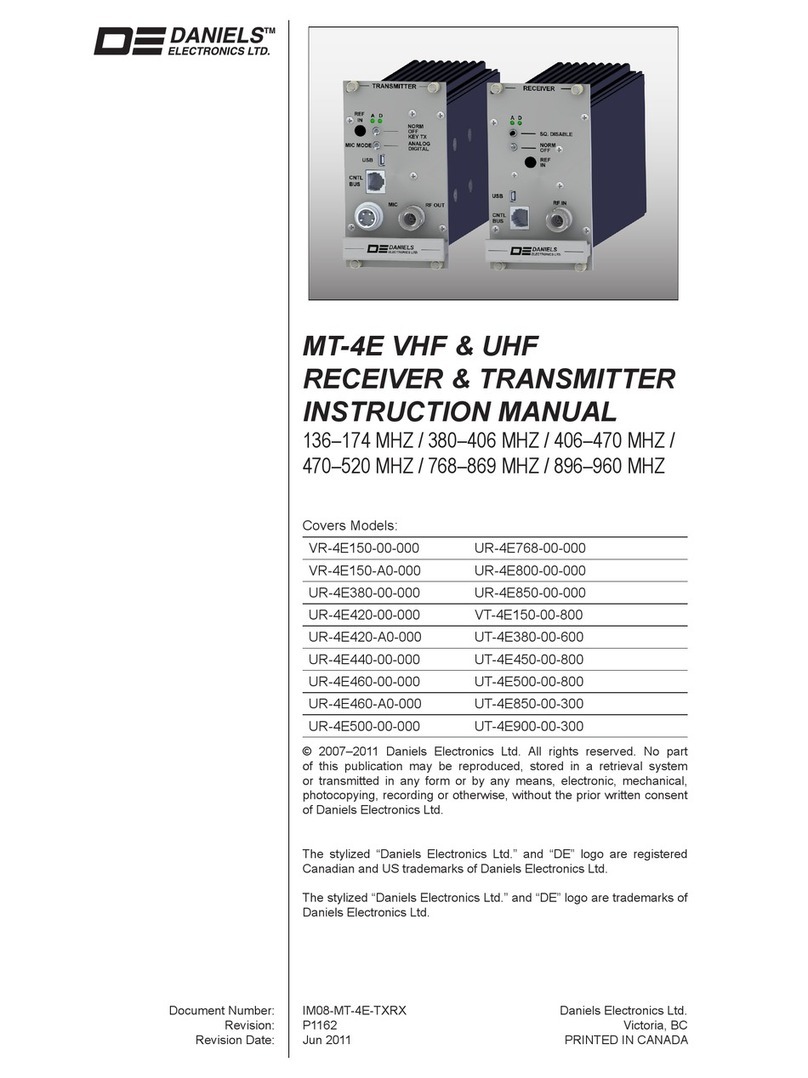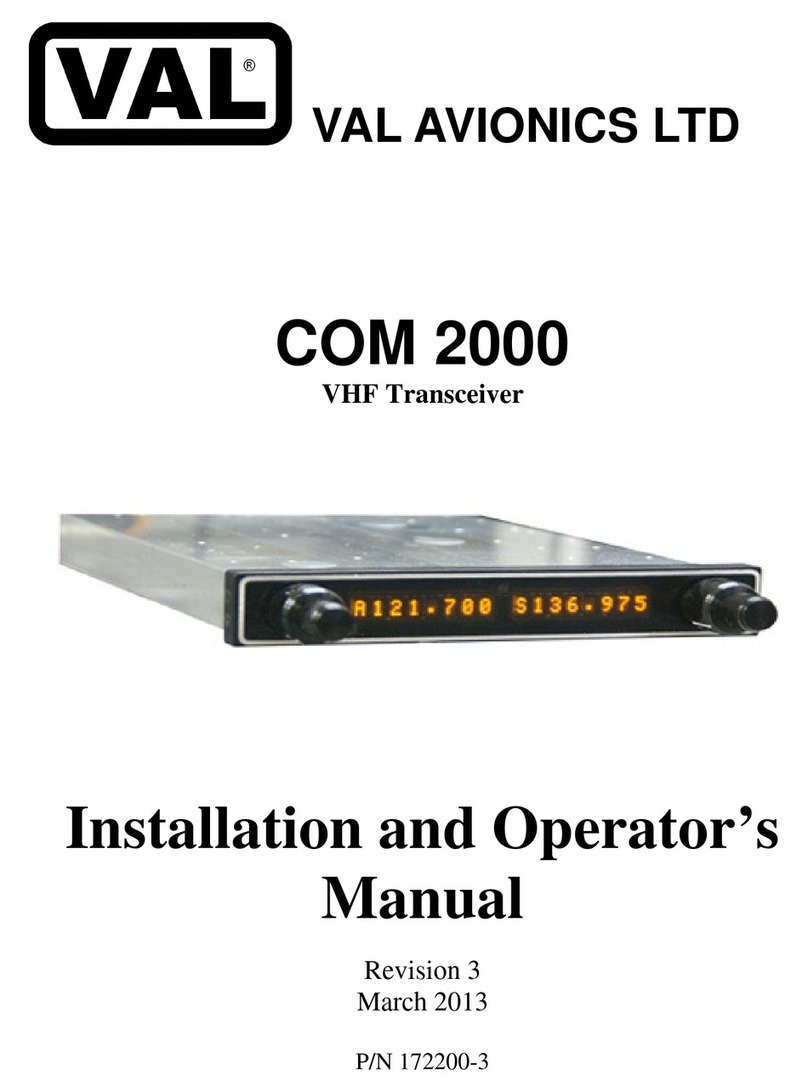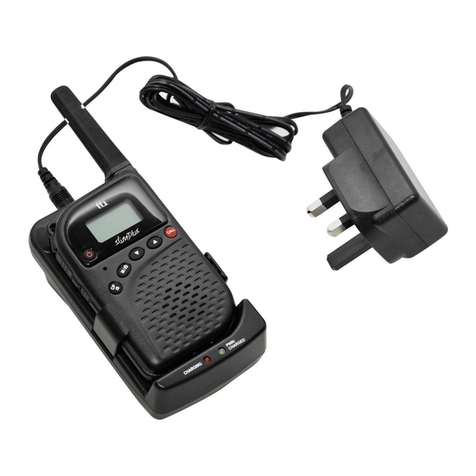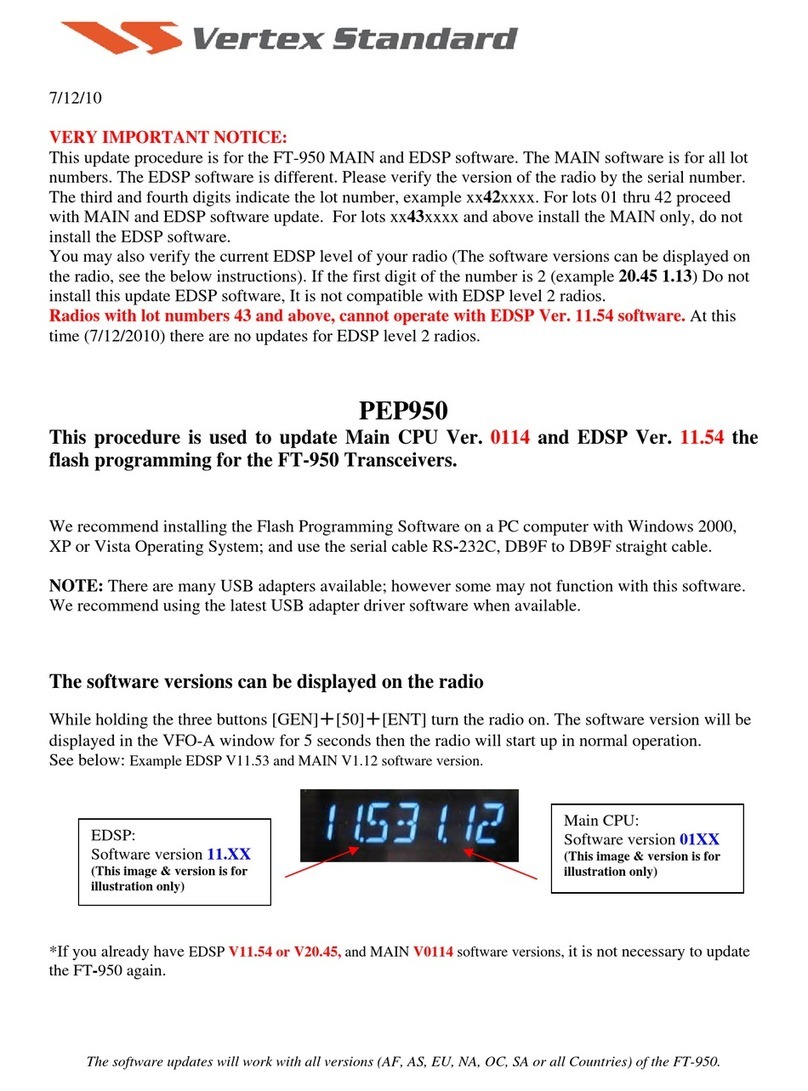Icom IC-F9511HT User manual

INSTRUCTION MANUAL
This device complies with Part 15 of the FCC Rules. Op-
eration is subject to the condition that this device does
not cause harmful interference.
iF9511HT
VHF P25 TRUNKING
MOBILE TRANSCEIVER

i
IMPORTANT
READ ALL INSTRUCTIONS carefully and com-
pletely before using the transceiver.
SAVE THIS INSTRUCTION MANUAL — This
instruction manual contains important operating instructions
for the IC-F9511HT VHF MOBILE TRANSCEIVER.
✔When the optional UT-125 aes/des encryption
unit is installed:
When you attempt to re-export this product and/or AES en-
cryption of this product is activated, you must comply with the
export regulations of your country, which can be highly restric-
tive. YOUR FAILURE TO COMPLY WITH EXPORT REGULA-
TIONS MAY SUBJECT YOU TO FINES OR PENALTIES. AES
encryption products including this software fall under the con-
trol of the Japanese Government as described in Appendix I:
Export Legal Controls and Appendix: Exchange Legal Con-
trols. Please consult with your dealer or sales representative
for details.
EXPLICIT DEFINITIONS
WORD DEFINITION
RWARNING Personal injury, fire hazard or electric
shock may occur.
CAUTION Equipment damage may occur.
NOTE
If disregarded, inconvenience only. No risk
of personal injury, fire or electric shock.
See the operating guide for details of Analog and APCO
P25 system operations. Consult your Icom dealer or sys-
tem operator for details concerning your transceivers pro-
gramming.
Icom, Icom Inc. and the logo are registered trademarks of Icom Incor-
porated (Japan) in the United States, the United Kingdom, Germany, France,
Spain, Russia and/or other countries.
All other products or brands are registered trademarks or trademarks of their
respective holders.

ii
FCC INFORMATION
• FOR CLASS B UNINTENTIONAL RADIATORS:
This equipment has been tested and found to comply with the
limits for a Class B digital device, pursuant to part 15 of the
FCC Rules. These limits are designed to provide reasonable
protection against harmful interference in a residential instal-
lation. This equipment generates, uses and can radiate radio
frequency energy and, if not installed and used in accordance
with the instructions, may cause harmful interference to radio
communications. However, there is no guarantee that inter-
ference will not occur in a particular installation. If this equip-
ment does cause harmful interference to radio or television
reception, which can be determined by turning the equipment
off and on, the user is encouraged to try to correct the inter-
ference by one or more of the following measures:
• Reorient or relocate the receiving antenna.
• Increase the separation between the equipment and
receiver.
• Connect the equipment into an outlet on a circuit different
from that to which the receiver is connected.
• Consult the dealer or an experienced radio/TV technician
for help.
ABOUT IPR
This device is made under license under one or more of the
following U.S. Patents: #4,590,473; #4,636,791; #5,148,482;
#5,185,796;#5,271,017;#5,377,229;#4,716,407;#4,972,460;
#5,502,767;#5,146,497;#5,164,986;#5,185,795;#5,164,986,
#5,185,795, and #5,146,497.
* IPR means ‘Intellectual Property Rights.’
VOICE CODING TECHNOLOGY
The AMBE+2™ voice coding Technology embodied in this
product is protected by intellectual property rights including
patent rights, copyrights and trade secrets of Digital Voice
Systems, Inc. This voice coding Technology is licensed sole-
ly for use within this Communications Equipment. The user
of this Technology is explicitly prohibited from attempting to
extract, remove, decompile, reverse engineer, or disassemble
the Object Code, or in any other way convert the Object Code
into a human-readable form. U.S. Patent Nos.
#5,870,405,#5,826,222,#5,754,974,#5,701,390,#5,715,365,
#5,649,050,#5,630,011,#5,581,656,#5,517,511,#5,491,772,
#5,247,579, #5,226,084 and #5,195,166.

iii
RWARNING! NEVER connect the transceiver to an AC
outlet. This may pose a fire hazard or result in an electric shock.
RWARNING! NEVER connect the transceiver to a
power source of more than 16 V DC such as a 24 V battery.
This connection will ruin the transceiver.
RWARNING! NEVER cut the DC power cable be-
tween the DC plug and fuse holder. If an incorrect connection
is made after cutting, the transceiver may be damaged.
RWARNING! NEVER place the transceiver where
normal operation of the vehicle may be hindered or where it
could cause bodily injury.
CAUTION! NEVER allow children to touch the trans-
ceiver.
CAUTION! NEVER expose the transceiver to rain,
snow or any liquids. The transceiver may be damaged.
USE the specified microphone only. Other microphones have
different pin assignments and may damage the transceiver.
DO NOT use or place the transceiver in areas with tem-
peratures below –30°C (–22°F) or above +60°C (+140°F), or
in areas subject to direct sunlight, such as the dashboard.
DO NOT place the transceiver in excessively dusty envi-
ronments.
DO NOT operate the transceiver without running the ve-
hicle’s engine. The vehicle’s battery will quickly run out if the
transceiver transmits while the vehicle’s engine OFF.
DO NOT place the transceiver against walls. This will ob-
struct heat dissipation.
DO NOT use chemical agents such as benzine or alcohol
when cleaning, as they damage the transceiver surfaces.
BE CAREFUL! The transceiver will become hot when
operating continuously for long periods.
KEEP the transceiver away from heavy rain, and never im-
merse it in the water.
When the supplied/optional microphone*, the front/rear
plate(s) and the speaker jack cover of the controller are at-
tached, the main unit and the controller meet IP54 require-
ments for dust-protection and splash resistance.
However, once these items have been dropped, dust-protec-
tion and splash resistance cannot be guaranteed because of
possible damage to these cases or the waterproof seal.
* The microphone is not dust-protection and splash resistance.
For U.S.A. only
CAUTION: Changes or modifications to this transceiver, not
expressly approved by Icom Inc., could void your authority to
operate this transceiver under FCC regulations.
PRECAUTIONS

iv
TABLE OF CONTENTS 1
2
3
4
5
6
7
8
9
10
11
12
13
14
15
16
IMPORTANT .......................................................................... i
EXPLICIT DEFINITIONS....................................................... i
FCC INFORMATION ............................................................ ii
ABOUT IPR .......................................................................... ii
VOICE CODING TECHNOLOGY ......................................... ii
PRECAUTIONS................................................................... iii
TABLE OF CONTENTS....................................................... iv
1 PANEL DESCRIPTION................................................1−6
n Front panel— Controller ...............................................1
n Function display— Controller .......................................3
n Programmable function keys........................................4
2 BASIC OPERATION..................................................7−13
n Turning power ON ........................................................7
n Channel selection.........................................................7
n Receiving and transmitting...........................................8
n Clock function...............................................................9
n Wake up function........................................................10
n Sleep function ............................................................11
n User set mode............................................................12
3 CONNECTION AND MAINTENANCE ....................14−21
n Separation cable connection ......................................14
n Rear panel connection ...............................................16
n Supplied Accessories.................................................17
n Mounting the transceiver ............................................18
n Antenna......................................................................20
n Fuse installation .........................................................20
n Cleaning .....................................................................20
n Speaker connector information ..................................21
4 OPTIONS.......................................................................22
5 SAFETY TRAINING INFORMATION.............................23

1
1PANEL DESCRIPTION
nFront panel— Controller
0 1 c h - 0 1
I C - F 9 5 1 1 H T
o
qew
y ru ti
!0
qAF VOLUME CONTROL KNOB
Rotate the knob to adjust the audio output level.
• Minimum audio level is pre-programmed.
wFUNCTION DISPLAY (p. 3)
Displays a variety of information, such as an operating
channel number/name, DTMF numbers and audible con-
dition, etc.
eUP/DOWN KEYS
Push to select an operating channel, etc.
*The desired function can be assigned by your dealer. (p. 4)
r10-KEYPAD
The keypad allows you to enter digits to:
• Select memory channels, tone channels and DTMF codes (when
in the DTMF code channel selection mode)
• Start up with a password
• Input the Individual ID code during P25 mode operation. (De-
pending on the pre-setting)
tBUSY INDICATOR
Lights green while receiving a signal, or when the squelch
is open.

2
1
PANEL DESCRIPTION
1
2
3
4
5
6
7
8
9
10
11
12
13
14
15
16
yPOWER SWITCH [POWER]
Push to turn the power ON and OFF.
• The following functions are available at power ON as options:
- Automatic scan start
- Password prompt
- Set mode
uTRANSMIT INDICATOR
Lights red while transmitting.
iDEALER-PROGRAMMABLE KEYS
Desired functions can be programmed independently by
your dealer. (p. 4)
In this instruction manual, these keys are from the left,
called [P0]/[P1]/[P2]/[P3]/[P4].
oMICROPHONE CONNECTOR
Connect the supplied or optional microphone.
• When you connect a microphone, be sure to fit the connector
cover of the microphone into the connector to maintain the con-
troller’s dust protection and splash resistance.
Connector cover
NEVER connect non-specified microphones. The pin
assignments may be different and the transceiver may
be damaged.
DMICROPHONE
The supplied microphone has a PTT switch and a hanger
hook.
• The following functions are available when the microphone is on
or off hook (depending on the setting):
- Automatic scan starts when it is on hook.
- Scan is cancelled when it is off hook.
- Scan is paused when it is off hook.
-
Automatic priority channel selection is available when it is off hook.
- Sets to ‘Inaudible’ condition (mute condition) when it is on hook.
-
Sets to ‘Audible’ condition (unmute condition) when it is off hook.
!0SPEAKER JACK
Connect a 4–8 øexternal speaker.
• Max. input power: 7 W
• Attach the jack cover when no external speaker is connected.
Jack cover

3
1PANEL DESCRIPTION
nFunction display— Controller
0 1 c h - 0 1
I c - F 9 5 1 1 H T
uq w e r t y i
!0
o
q RECEIVED SIGNAL STRENGTH INDICATOR
Indicates relative signal strength level.
Weak Receive Signal level Strong
wLOW POWER INDICATOR
Appears when low output power is selected.
• When high output power is selected, no indicator appears.
eAUDIBLE INDICATOR
Appears when the channel is in the ‘audible’ (unmute) con-
dition.
rCOMPANDER INDICATOR
Appears when the compander function*is activated.
* Analog mode operation only
tSCRAMBLER INDICATOR
Appears when the voice scrambler or encryption function
is activated.
yBELL INDICATOR
Appears/blinks when the specific page call*is received,
depending on how the transceiver has been pre-pro-
grammed.
* P25 operation only
uTELEPHONE INDICATOR
Appears when a phone call* is received.
* P25 operation only
iSHORT MESSAGE INDICATOR
Appears when an Status message or Short message is
received.
oALPHANUMERIC DISPLAY
Displays an operating channel number, channel name, Set
mode contents, DTMF code, etc.
!0 ACTIVATED KEY INDICATOR
Appears above the key assigned as [Scan Add/Del (Tag)]
key when that key has been activated.
See the operating guide for details of Analog and P25
Trunking/Conventional system operations. Consult your
Icom dealer or system operator for details concerning
your transceiver’s programming.

4
1
PANEL DESCRIPTION
1
2
3
4
5
6
7
8
9
10
11
12
13
14
15
16
nProgrammable function keys
The following functions can be assigned to [UP], [DOWN],
[P0], [P1], [P2], [P3] and [P4] programmable function keys.
Consult your Icom dealer or system operator for details con-
cerning your transceivers programming.
If the programmable function names are bracketed in the fol-
lowing explanations, the specific key is used to activate the
function depends on the programming.
CH UP AND DOWN KEYS
➥Push to select an operating channel.
➥Push to select a scan group after pushing and holding
[Scan A Start/Stop]/[Scan B Start/Stop].
ZONE KEY
Push this key, then push [CH Up] or [CH Down] to select the
desired zone.
What is “zone”?—The desired channels are assigned
into a zone according to the intended use for grouping.
For example, ‘Staff A’ and ‘Staff B’ are assigned into a
“Business” zone, and ‘John’ and ‘Cindy’ are assigned into a
“Private” zone.
SCAN A START/STOP KEY
➥Push to start and cancel scanning operation.
• When Power ON Scan function is activated, push to pause the
scanning operation. And the paused scan resumes after the
specified time period has passed.
➥Push and hold this key for 1 sec. to indicate the scan list,
then push [CH Up] or [CH Down] to select the desired list.
(Available depending on the pre-setting.)
SCAN B START/STOP KEY
➥Push to start and cancel scanning operation.
The scan restarts after the specified time period has
passed when the scan (started with this key) is cancelled
by except for this key operation.
➥Push and hold this key for 1 sec. to indicate the scan list,
then push [CH Up] or [CH Down] to select the desired list.
SCAN ADD/DEL (TAG) KEY
Push to add or delete the selected channel to/from the scan
list.
1. Push to indicate the scan list, then push [CH Up] or [CH
Down] to select the desired list.
2. Push to add or delete the channel to/from the selected
scan list.
3. Push and hold for 1 sec. to exit the scan list selection
mode.

5
1PANEL DESCRIPTION
PRIO A/B KEYS
➥Push to select Priority A or Priority B channel.
➥Push and hold [Prio A (Rewrite)] or [Prio B (Rewrite)] for
1 sec. to rewrite the operating channel as the Priority A or
Priority B channel.
MR-CH 1/2/3/4 KEYS
Push to select the memory channel 1 to 4 directly.
MONI KEY
Mute and release the CTCSS (DTCS), NAC or Talkgroup ID
squelch mute. Open any squelch/deactivate any mute while
pushing this key.
TALK AROUND KEY (Conventional operation only)
Turn the talk around function ON and OFF.
• The talk around function equalizes the transmit frequency to the
receive frequency for transceiver-to-transceiver communication.
PUBLIC ADDRESS KEY
Push to activate the Public Address (PA) function for voice
amplification. When the PA function is activated, the audio
output can be controlled from the transceiver separately with
[CH Up] or [CH Down].
• This function is available when the external unit, such as a audio
amplifier, speaker, etc. is additionally connected. (p. 16)
• Push this key, then speak into the microphone while pushing and
holding [PTT].
NOTE: “PA/RX Speaker” setting should be turned OFF by
your dealer with the CS-F9010/F9510 cloning software
to activate the PA function. Ask your dealer for details.
RX SPEAKER KEY
Push to turn the RX speaker function ON or OFF.
When the RX speaker function is turned ON, the received
audio can be heard via the external speaker.
• This function is available when the external speaker is additionally
connected. (p. 16)
• This function is useful when you are out of the vehicle.
• The audio output level is linked to the transceiver’s volume control.
DO NOT operate this key with this transceiver. Otherwise
no audio may be emitted.
LOCK KEY
Push and hold to electronically lock all programmable keys
except the following:
[Moni], [Light], [Lock], [Emergency Single], [Emergency Repeat],
[Surveillance] and [OPT 1/2/3].
LIGHT KEY
Push to turn the transceiver’s backlight ON for about 5 sec.
when the backlight function is turned OFF in user set mode.
(p. 12)
HIGH/LOW KEY
Push to select the transmit output power temporarily or per-
manently, depending on the pre-setting.
• Ask your dealer for the output power level for each selection.

6
1
PANEL DESCRIPTION
1
2
3
4
5
6
7
8
9
10
11
12
13
14
15
16
SURVEILLANCE KEY
Push to turn the surveillance function ON or OFF.
When this function is turned ON, the beep is not emitted and
the LCD backlight does not light when a signal is received or
a key is pushed, etc.
HOOK SCAN KEY
When the on hook scan function is activated, push this key
to stop scanning temporarily. Push this key again to re-start
scanning.
USER SET MODE KEY
➥Push and hold to enter user set mode.
• During in the user set mode, push this key to select an item that
is enabled by your dealer, and change the value or condition by
pushing [CH Up] or [CH Down].
➥Push and hold this key again to exit user set mode.
User set mode is also available via the ‘Power ON function.’
Refer to p. 12 also.
OPT 1/2/3 KEYS
Push to control the output signal level from the optional unit
connector.
CLOCK KEY
➥Push to indicate the current time on the LCD. (p. 9)
• While the current time is indicated, push and hold this key for
1 sec. to enter the time data edit mode. (p. 9)
➥Push and hold for 1 sec. to enter the clock set mode.
(pgs. 10, 11)
• During in the clock set mode, push this key to select an item,
and change the value or condition by pushing [CH Up] or [CH
Down].
HOME KEY
Push to return to normal operation.

7
2BASIC OPERATION
nTurning power ON
When you use the transceiver for the first time, or after the
transceiver has been left unused for a long time, make
sure to check the date and time indication after turning the
power ON. If the time and date are not correct, reset them.
(p. 9)
qPush [ ] to turn the power ON.
wIf the transceiver is programmed for a start up password,
input the digit codes as directed by your dealer.
• 10-keypad can be used for password input.
• The keys as below can be used for password input:
The transceiver detects numbers in the same block as identical.
Therefore “01234” and “56789” are the same.
KEY P0 P1 P2 P3 P4
NUMBER 0
5
1
6
2
7
3
8
4
9
P0 P4P3P2P1
*In this instruction manual, these keys are
from the left, called [P0]/[P1]/[P2]/[P3]/[P4].
eWhen the “PASSWORD” indication does not clear after in-
putting 6 digits, the input code number may be incorrect.
Turn the power off and start over in this case.
nChannel selection
Several types of channel selections are available. Methods
may differ according to your system set up.
NON-ZONE TYPE:
To select the desired operating channel:
• Push [CH Up] or [CH Down].
• Push one of [MR-CH 1] to [MR-CH 4].
ZONE TYPE:
To select the desired zone:
• Push [Zone], then push [CH Up] or [CH Down].
AUTOMATIC SCAN TYPE:
Channel setting is not necessary for this type. When turn-
ing power ON, the transceiver automatically starts scanning.
Scanning stops when receiving a call.

8
2
BASIC OPERATION
1
2
3
4
5
6
7
8
9
10
11
12
13
14
15
16
nReceiving and transmitting
Receiving:
qPush [ ] to turn the power ON.
wPush [CH Up] or [CH Down] to select a channel in se-
quence.
eWhile receiving a call, adjust the audio output level to a
comfortable listening level.
Transmitting:
Wait for the channel to become clear to avoid interference.
qTake the microphone off hook.
• The ‘audible’ condition is selected and BUSY indicator lights
green.
• A priority channel may be selected automatically.
wWait for the channel to become clear.
• The channel is busy when BUSY indicator lights green.
eWhile pushing and holding [PTT], speak into the micro-
phone at your normal voice level.
rRelease [PTT] to receive.
IMPORTANT: To maximize the readability of your signal;
1. Pause briefly after pushing [PTT].
2. Hold the microphone 5 to 10 cm (2 to 4 inches) from
your mouth, then speak into the microphone at a normal
voice level.
DTransmitting notes
• Transmit inhibit function
The transceiver has several inhibit functions which restrict
transmission under the following conditions:
- The channel is in mute condition (‘Inaudible’ condition;
“ ” does not appear.)
- The channel is busy.
- Un-matched (or matched) CTCSS is received.
(Depending on the pre-setting)
- Un-matched (or matched) NAC is received.*
(Depending on the pre-setting)
- The selected channel is a ‘receive only’ channel.
*Digital mode operation only.
• Time-out timer
After continuous transmission for the pre-programmed time
period, the time-out timer is activated, causing the transceiver
to stop transmitting.
• Penalty timer
Once the time-out timer is activated, transmission is further
inhibited for a period determined by the penalty timer.

9
2BASIC OPERATION
nClock function
The transceiver indicates the current time and date when
[Clock] is pushed. And you can change the indication format
and time/date settings.
When you use the transceiver for the first time, or after the
transceiver has been left unused for a long time, make
sure to check the date and time indication after turning the
power ON. If the time and date are not correct, reset
them.
DTime and date indication
qPush [Clock] to indicate the current time and date on the
LCD.
• When the indication format is set to 12-hour, “AM” or “PM” is
indicated.
• The LCD indication returns to the stand-by mode after 30 sec.
has passed with no operation.
1 2 H R 12 : 0 0 P M
Y M D 0 8- 0 4 - 0 1
The time indication format (12-hour/24-hour) Time
Date
Date indication format (Y: Year, M: Month, D: Day)
wPush [Clock] again to return to the stand-by mode.
DTime and date settings
qPush [Clock] to indicate the current time and date on the
LCD.
1 2 H R 12 : 0 0 P M
Y M D 0 8- 0 4 - 0 1
wPush and hold [Clock] for 1 sec. to enter the time and date
setting mode.
• The time indication format, “24HR” or “12HR” blinks.
1 2 H R 12 : 0 0 P M
Y M D 0 8- 0 4 - 0 1
ePush [Clock] to select the desired item to be changed.
rPush [CH Up] or [CH Down] to set the selected item.
1 2 H R 03 : 0 0 P M
Y M D 0 8- 0 4 - 0 1

10
2
BASIC OPERATION
1
2
3
4
5
6
7
8
9
10
11
12
13
14
15
16
tPush [Clock] to set.
• The next item blinks.
1 2 H R 03 : 0 0 P M
Y M D 0 8- 0 4 - 0 1
yRepeat steps eto tto set items.
uAfter setting, push and hold [Clock] for 1 sec. to program.
• Return to the time and date setting mode.
iPush [Clock] to return to the stand-by mode.
nWake up function
The wake up function allows the transceiver to be automati-
cally turned ON according to the wake up time setting.
qPush and hold [Clock] for 1 sec. to enter the clock set
mode.
• “WAKE UP” is indicated.
W A K E UP
O F F
wPush [CH Up] or [CH Down] to turn the wake up function
ON.
ePush [Clock] to set, and select “WAKE UP TIME.”
W A K E UP T I M E
07:25AM
rPush [CH Up] or [CH Down] to enter the wake up time edit
mode.
• The ‘hour’ digit blinks.
W A K E UP T I M E
07:25AM
☞Continues to the next page

11
2BASIC OPERATION
tPush [CH Up] or [CH Down] to input the ‘hour’ data for
wake up time. After inputting, push [Clock] to set.
• The ‘minutes’ digit blinks.
W A K E UP T I M E
09:25AM
yPush [CH Up] or [CH Down] to input the ‘minutes’ data for
wake up time. After inputting, push [Clock] to set.
W A K E UP T I M E
09:30AM
uPush and hold [Clock] for 1 sec. to exit the clock set
mode.
• Return to the stand-by mode.
nSleep function
The sleep function allows the transceiver to be automatically
turned OFF according to the sleep time setting.
qPush and hold [Clock] for 1 sec. to enter the clock set
mode.
• “WAKE UP” is indicated.
wPush [Clock] several times to select “SLEEP.”
SLEEP
O N
ePush [CH Up] or [CH Down] to turn the sleep function
ON.
rPush [Clock] to set, and select “SLEEP TIME.”
S L E E P T I M E
05:35PM
tPush [CH Up] or [CH Down] to enter the sleep time edit
mode.
• The ‘hour’ digit blinks.
S L E E P T I M E
05:35PM

12
2
BASIC OPERATION
1
2
3
4
5
6
7
8
9
10
11
12
13
14
15
16
yPush [CH Up] or [CH Down] to input the ‘hour’ data for
sleep time. After inputting, push [Clock] to set.
• The ‘minutes’ digit blinks.
S L E E P T I M E
08:35PM
uPush [CH Up] or [CH Down] to input the ‘minutes’ data for
sleep time. After inputting, push [Clock] to set.
S L E E P T I M E
08:00PM
iPush and hold [Clock] for 1 sec. to exit the clock set
mode.
• Return to the stand-by mode.
nUser set mode
The user set mode is accessed with [User Set Mode] and
allows you to set seldom-changed settings. In this case you
can “customize” the transceiver operation to suit your prefer-
ences and operating style.
Entering the user set mode:
qWhile pushing and holding [P1] and [P2], push [ ] to turn
the power ON.
• Turn power OFF in advance.
• You should hold [P1] and [P2] until “SET MODE” appears on the
display.
[P1] [P2] [ ]
wPush and hold [P0] to enter user set mode.
[P0]
☞Continues to the next page

ePush [P0] several times to select the appropriate item.
Then, push [Up] or [Down] to set the desired level/condi-
tion.
• Available set mode functions are Backlight, LCD Contrast,
Beep, Beep Level, Ringer Level, SQL Level, AF Min. Level,
Mic Gain, Horn, Battery Voltage, Signal Moni and System In-
formation.
[P0] [Up]/[Down]
rPush [ ] again to exit set mode.
[ ]
User set mode is also available via a programmable key.
Please refer to p. 6 [User Set Mode Key] section.
13
2BASIC OPERATION

14
3
CONNECTION AND MAINTENANCE
1
2
3
4
5
6
7
8
9
10
11
12
13
14
15
16
nSeparation cable connection
CAUTION! To avoid damage to the transceiver, disconnect
the DC power cable from the transceiver before connecting
the separation cable.
NOTE: The following connections should be performed by
your Icom dealer or distributor.
The supplied or optional separation cable is required for the
controller and the main unit connection.
See “OPTIONS” on page 22 for the separation cable details.
DController
qUnscrew the 4 screws, then remove the rear plate from the
controller.
Unscrew the cir-
cuit board screw.
Controller
Rear plate
wConnect the separation cable to the controller as shown
below.
• The cable can be inserted into either the left or right grooves as
desired.
Separation
cable
Rear plate
Cable
groove
Controller
Screw the removed
circuit board screw
in step qto connect
the cable terminal.
eAfter the cable connection, replace the removed rear plate
and the 4 screws, then connect the opposite side of the
separation cable to the main unit. (See the next page)

15
3CONNECTION AND MAINTENANCE
DMain unit
qUnscrew the 4 screws of the front plate (either the left or
right), then remove the front plate from the main unit.
Main unit
Unscrew the cir-
cuit board screw.
Front plate
wConnect the opposite side of the separation cable that is
connected to the controller described on the previous page
as shown below.
• The cable can be inserted into either the left or right grooves as
desired.
Main unit
Separation
cable
Front plate
Cable grooves
Screw the removed
circuit board screw
in step qto connect
the cable terminal.
eAfter the cable connection, replace the removed front plate
and the 4 screws, then connect the DC power cable.
Other manuals for IC-F9511HT
1
Table of contents
Other Icom Transceiver manuals
Popular Transceiver manuals by other brands
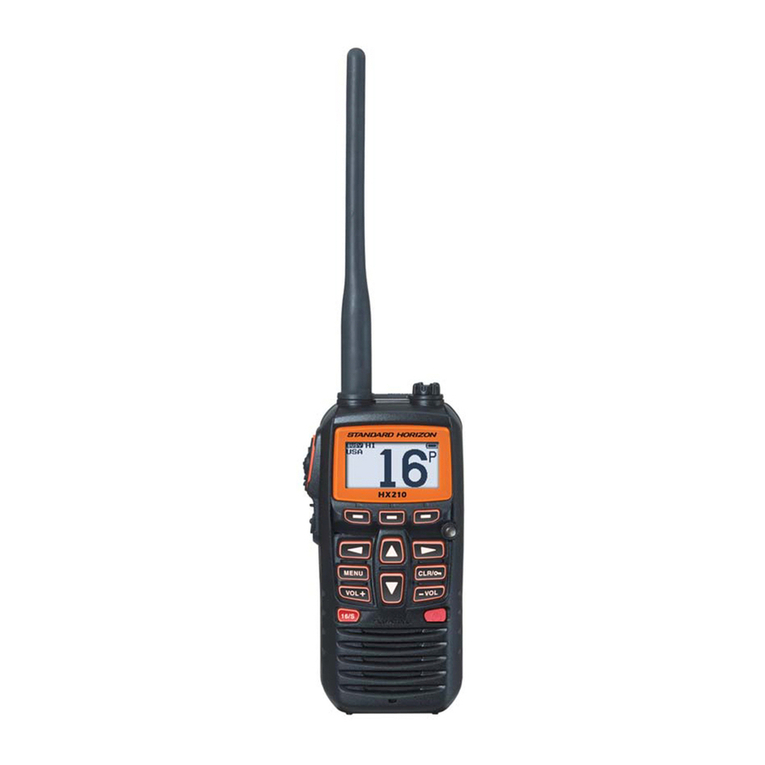
Standard Horizon
Standard Horizon HX210 owner's manual
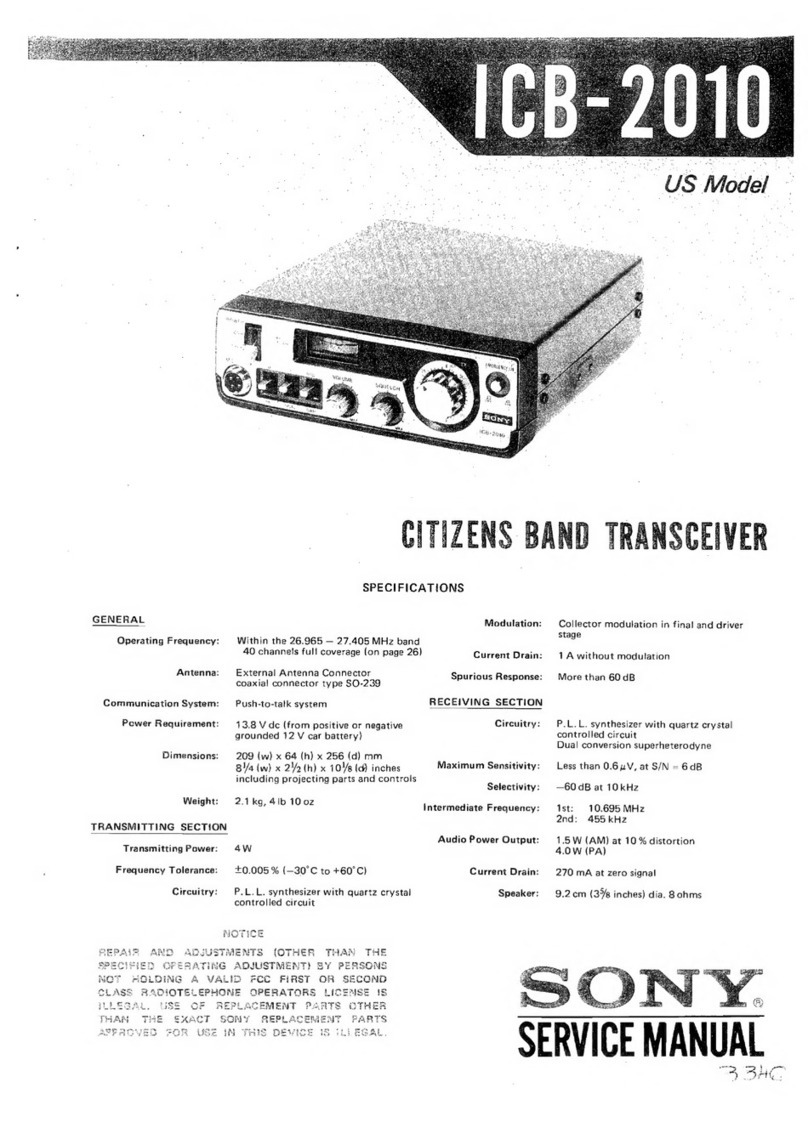
Sony
Sony ICB-2010 Service manual
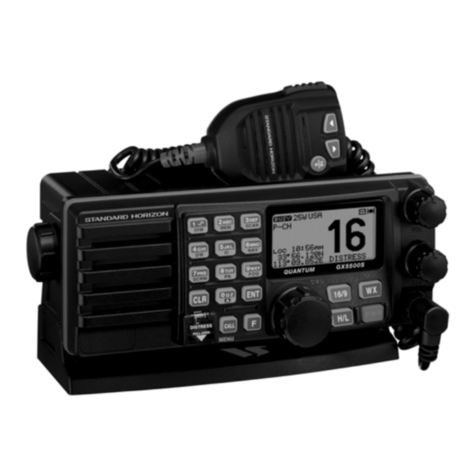
Standard Horizon
Standard Horizon QUANTUM GX5500S owner's manual
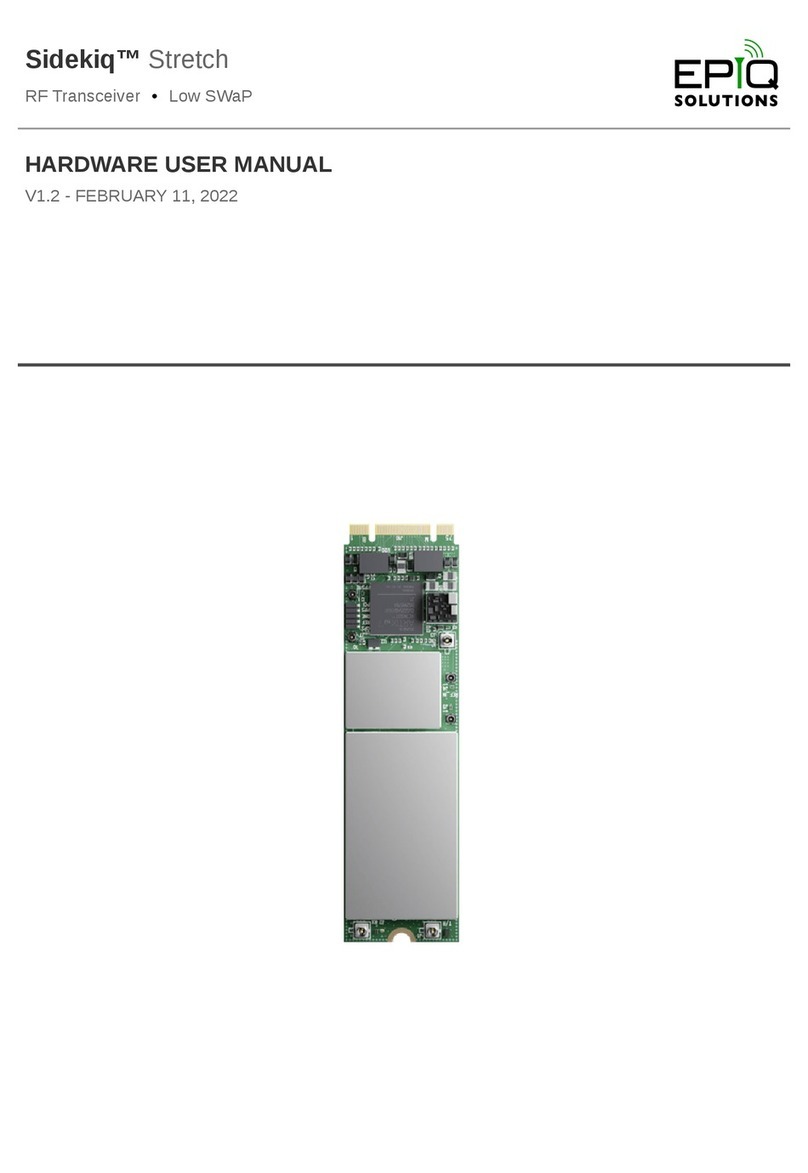
Epiq Solutions
Epiq Solutions Sidekiq Stretch Hardware user manual
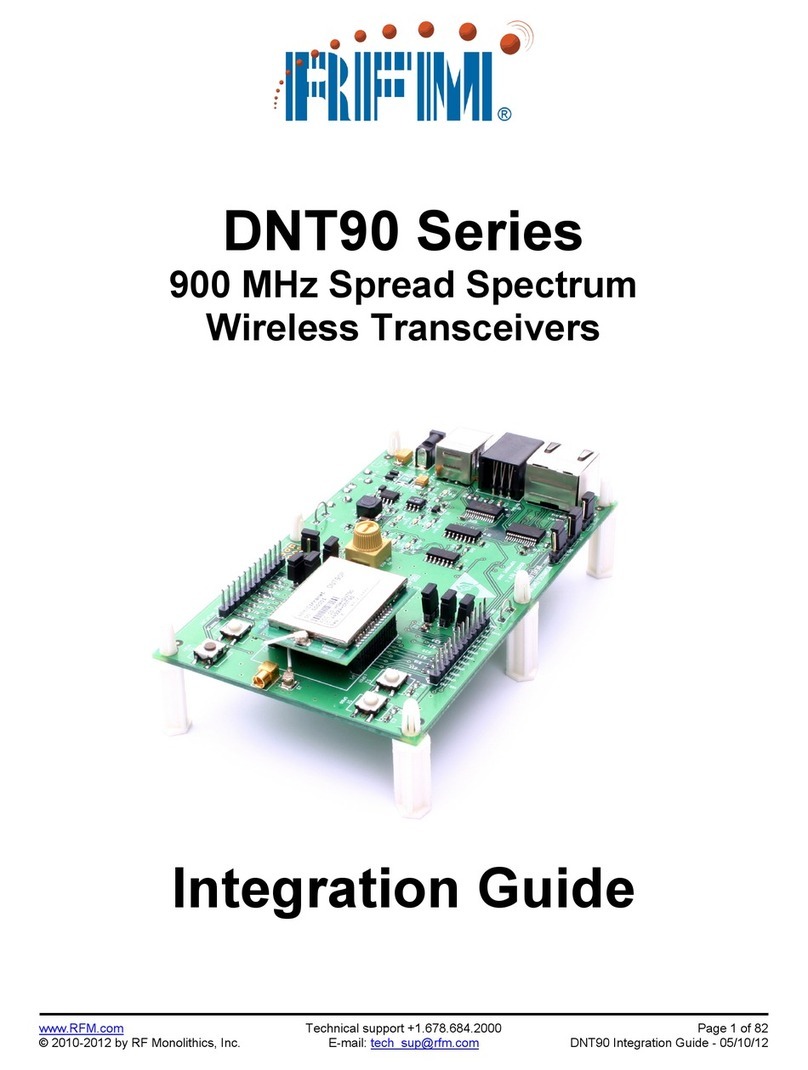
RFM
RFM DNT90 Series Integration guide
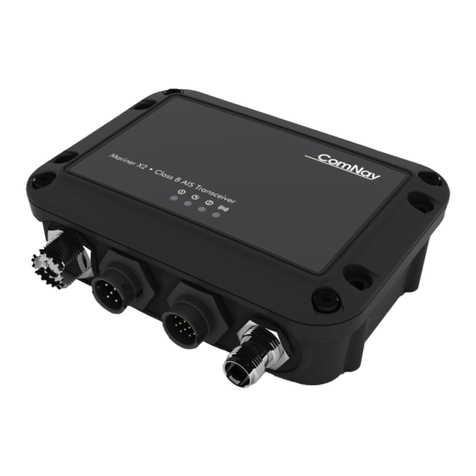
ComNav
ComNav Class B AIS Installation & operation manual
